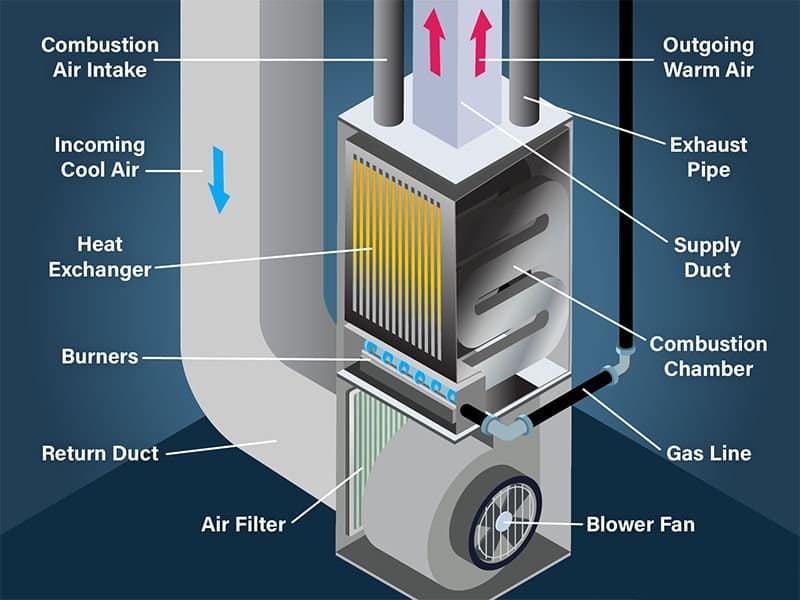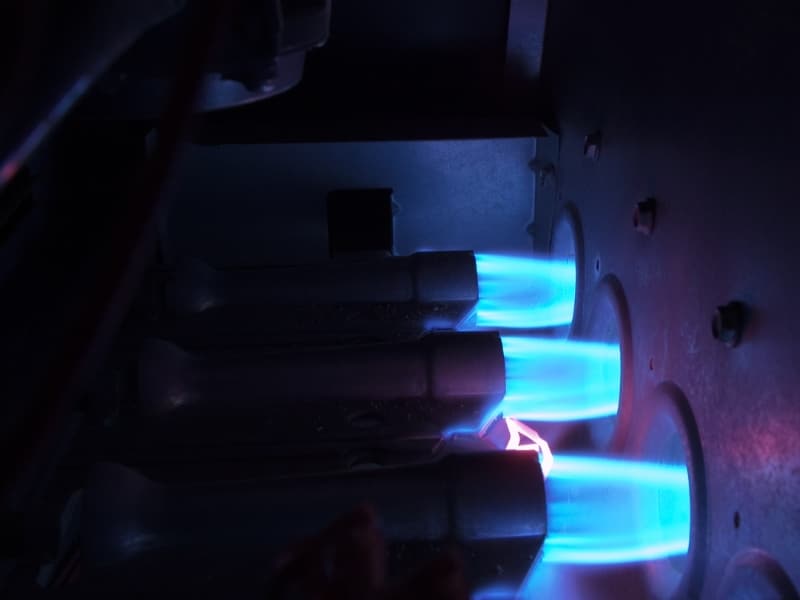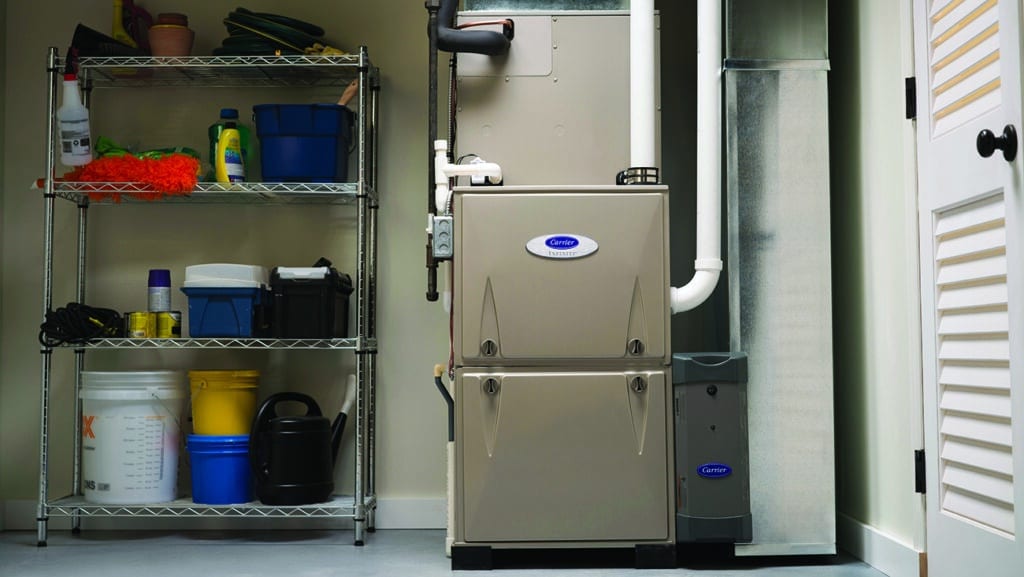Table of Contents
Are you planning to buy a gas furnace for your home? Understanding how they work, what to look for, and how to choose the right one will help you make a smart investment.
Natural gas is one of the most affordable and reliable ways to heat your home. According to the Natural Gas Supply Association, around 62 million homes in the United States, more than half of all households, use a natural gas furnace. It remains the most popular and dependable heating system today.
Fun fact: The first gas furnace concept was patented in 1919 by Alice Parker of Morristown, New Jersey.
What Is a Gas Furnace?
A gas furnace uses natural gas or propane to heat air that’s distributed through ducts to different rooms in your home. While both natural gas and propane are used for heating, appliances that heat water are called boilers, not furnaces.
How Does a Gas Furnace Work?
Modern gas furnaces mix air and fuel (either natural gas or propane) and burn the mixture inside a sealed chamber to produce heat. The heat is transferred through a heat exchanger, which prevents exhaust gases from entering your living space.
A built-in fan pushes the warmed air through ducts to heat your rooms, while return ducts send cool air back to the furnace for reheating. Thermostats in your home control the system, turning it on and off automatically to maintain your desired temperature.

Gas Furnace Considerations
Before buying or replacing a furnace, there are a few key things to consider such as the system’s age, repair costs, performance, and efficiency.
Gas Furnace Replacement vs. Repair
A furnace typically lasts around 20 years. You can think of its value decreasing evenly over that time. If a repair costs more than half of the remaining value of your furnace, replacement is usually the better option.
Example Calculation
For instance, if you bought your furnace 12 years ago for $6,000, it loses about $300 in value each year. With 8 years left, it’s now worth about $2,400. If a repair costs more than $1,200 (half the remaining value), replacement makes more financial sense. If the repair costs less, fixing it may be the best choice.
Gas Consumption and Efficiency
Check your previous utility bills to see how much gas your furnace consumes. If gas usage keeps increasing without any major changes in your home, it could mean your unit is losing efficiency.
If your furnace is 15 years or older, that’s often a sign it’s time to consider a replacement.
Efficiency Ratings
Efficiency levels vary between models. A standard-efficiency furnace converts at least 80% of fuel into heat, while high-efficiency models reach between 90% and 98%. Investing in a high-efficiency furnace may cost more upfront, but it lowers energy bills and environmental impact in the long run.

How Heat Is Delivered by a Gas Furnace
There are three main types of gas furnaces, each with different performance levels:
Single-Stage Furnaces
These operate either at full power or off. They are the least expensive but less efficient and less consistent in maintaining temperature.
Two-Stage Furnaces
These operate at two output levels, low and high, depending on how much heat your home needs. They’re more efficient and provide steadier warmth.
Modulating Furnaces
The most advanced type, these adjust heat output in small increments for precise temperature control. They are the most efficient and offer superior comfort by maintaining an even temperature throughout your home.
How Much Does a Gas Furnace Cost?
The cost of a new gas furnace installation typically ranges between $3,000 and $12,000, depending on the brand, size, and installation complexity. On average, most homeowners spend around $6,000 for a professionally installed system.
Operating costs depend on factors like the size of your home, insulation, climate, thermostat settings, and natural gas prices. In mild climates, yearly heating costs might be around $500, while in colder regions or older, drafty homes, it can be much higher.
Keep in mind that propane is usually more expensive than natural gas because it must be delivered by truck rather than through pipelines. Areas with limited propane suppliers may also experience higher and less stable prices.

Gas Furnace vs. Other Heating Options
If natural gas service is available in your area, it’s usually the most cost-effective and convenient heating choice. Occasionally, other fuels like oil or electricity may offer temporary savings, but natural gas remains the most stable and efficient option in the long term.
For homes without access to natural gas, propane, oil, or electric furnaces or even a modern heat pump might be alternatives worth considering.
Tips for Choosing the Best Unit for Your Home
- Look for models with ENERGY STAR® certification for maximum efficiency.
- Make sure your furnace is properly sized for your home’s square footage and insulation.
- Hire a trusted HVAC professional like Prime Genius Heating & Air for expert installation and maintenance.
- Compare warranty coverage and service availability before finalizing your purchase.
Final Thoughts
A gas furnace is one of the most efficient and reliable ways to heat your home. Understanding how it works, how to maintain it, and when to replace it can help you get the most out of your investment.
At Prime Genius Heating and Air, we help Sacramento homeowners choose the right furnace for their home’s size, energy needs, and budget. Whether you’re looking for a new installation or need to replace an older system, our experienced team is here to make the process simple and worry-free.


